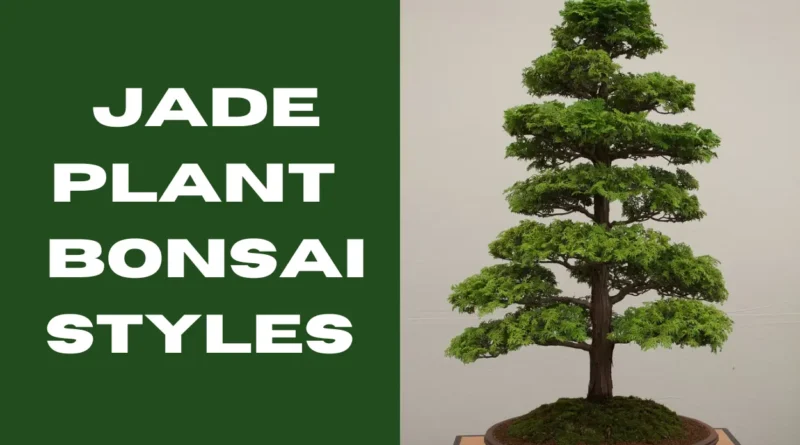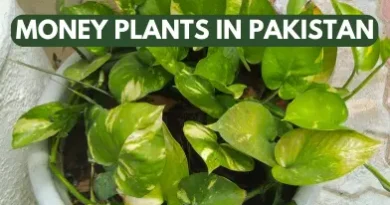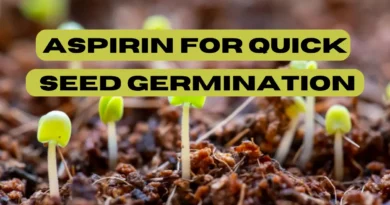6 Jade Plant Bonsai Styles| Care of Bonsai Jade Plant|2024|
Bonsai Beauty: Exploring Different Jade Plant Bonsai Styles & General Care of Bonsai Jade Plant
Jade plants are beloved for their resilience and charm. The Jade Plant, scientifically known as Crassula ovata belongs to the succulent family that can be transformed into stunning bonsai. In this article, we will explore the common jade plant bonsai styles and explore various ideas to turn these resilient wonders into green masterpieces.
Jade plant bonsai cultivation is a creative effort in which you can care for a living artwork. Let’s explore the general care of bonsai jade plant in more detail and discover the common bonsai shapes and styles that are available.
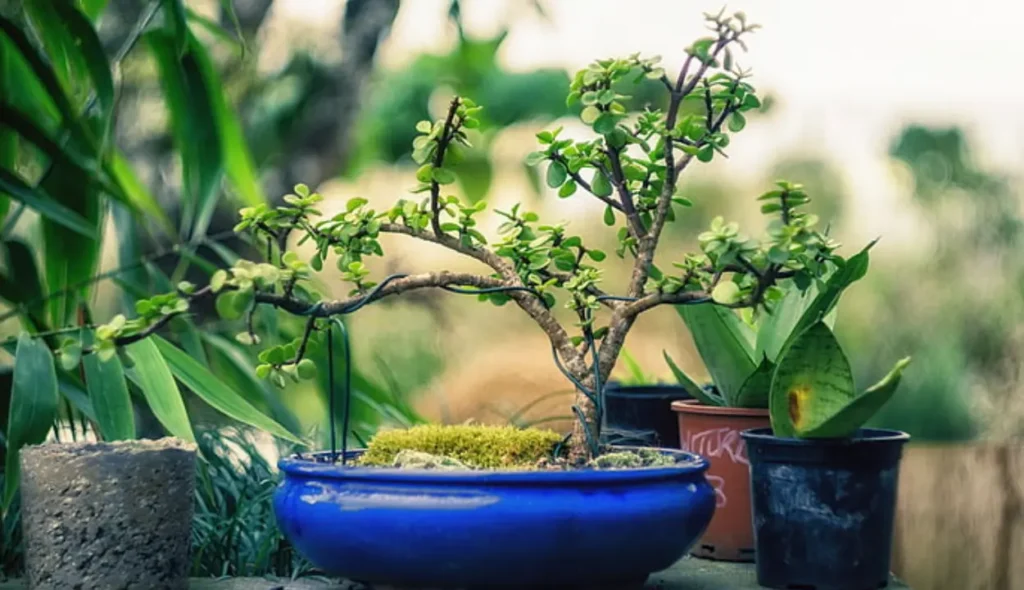
Table of Contents
Why It Is Important To Choose the Right Variety For Jade Plant Bonsai Styles:
It is important to select a suitable variety for the bonsai of the jade plant because not all varieties can be used to build bonsai. There are over 1200+ varieties of jade plants in the world. Several Jade Plant varieties have characteristics that make them perfect for bonsai. The bonsai varieties of jade plants listed below are ideal for bonsai.
- Classic Jade Plant:
An excellent option for bonsai is the classic jade plant, which has oval-shaped, and lush green leaves.
- Hobbit Jade:
The branches and thick twisted trunks are characteristics of its natural development pattern and are perfectly suited to the bonsai art form.
- Tricolor Jade:
This variety gives your Jade Plant bonsai a pop of color with its leaves that are pink, cream, and green.
- Gollum Tiger Jade:
The stunning leaves and tendency of the trunk to thicken this plant provide a perfect base upon which to shape a beautiful bonsai.
Preparing the Jade Plant:
Pruning and Wiring:
Pruning is an important step in shaping jade plants. Pruning involves trimming away excess growth to maintain the desired shape and size during the growing season which is done in spring or early summer. Wiring is used to direct the branches and form specific structures. Utilize gentle wiring to guide branch growth, but avoid over-tightening.
It is important to remember that jade plants heal slowly and we recommend avoiding aggressive pruning.
Bonsai Shapes and Styles:
Common Jade Plant Bonsai Styles:
- Informal Upright:
The informal upright bonsai style is known as “Moyogi” in Japanese. In this style instead of growing completely straight, the trunk of the tree has a soft, elegant curve. The pattern of branches is uneven but well-balanced. Achieving this style requires careful pruning and wiring to shape the trunk and branches while maintaining a natural appearance.
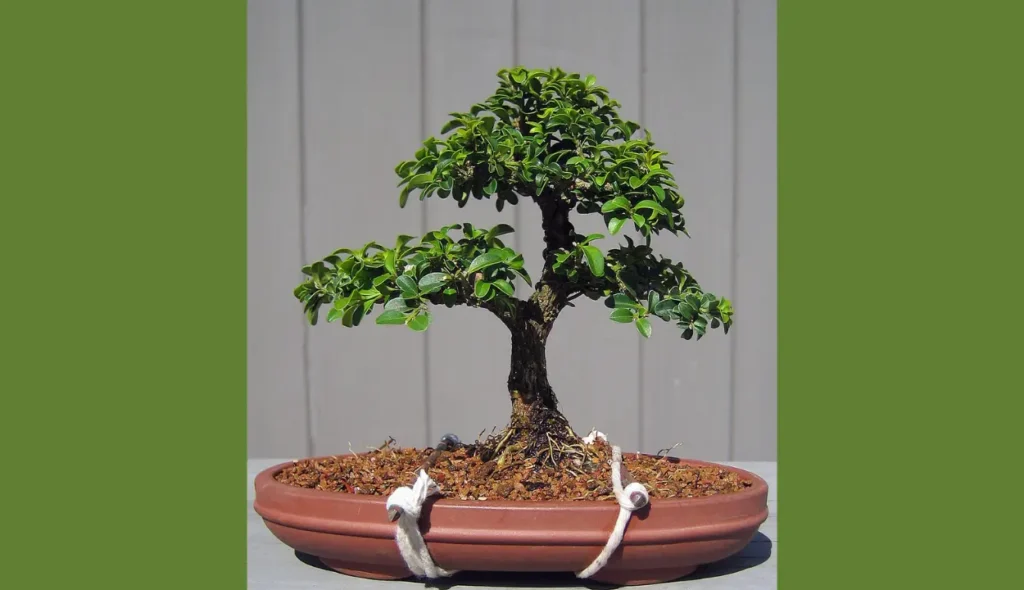
- Formal upright:
A formal bonsai is also known as “Chokkan” in Japanese. The tree’s trunk develops straight and upright, like a mature tree. The branches in a formal bonsai are structured in a balanced and symmetrical pattern. This formal bonsai style has a very neat and lovely appearance.
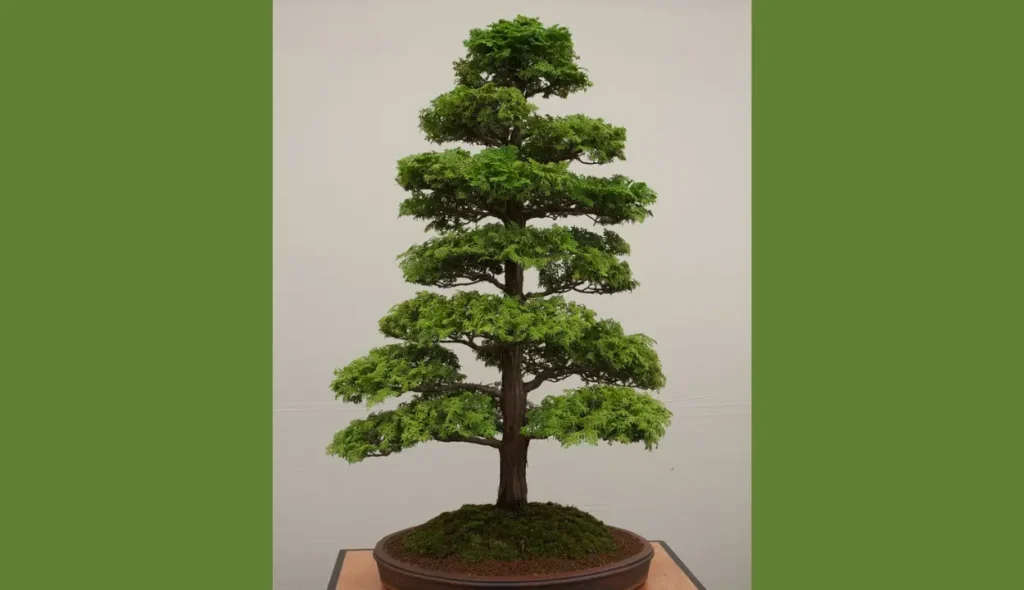
- Slanting Style:
The slanting style in bonsai means the tree’s trunk leans to one side. This style makes the bonsai look dynamic and interesting like it’s bending in the wind. The downside branches are slightly longer than the upper side to complement the slanted trunk.
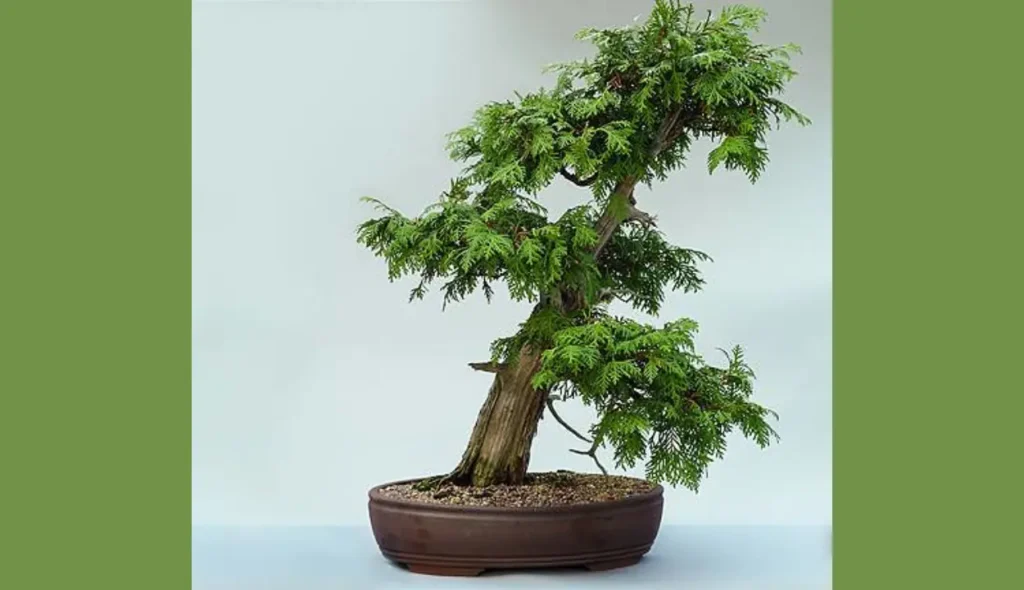
- Cascade Style:
In cascade style, the bonsai’s trunk curves downward, just like a waterfall. The branches and foliage also drape downwards, creating a cascading effect, like a plant hanging from a pot. Cascade style is unique and eye-catching which makes it a favorite among bonsai lovers. To achieve this, allow the branches to grow longer and trail gracefully, giving the appearance of a cascading waterfall.
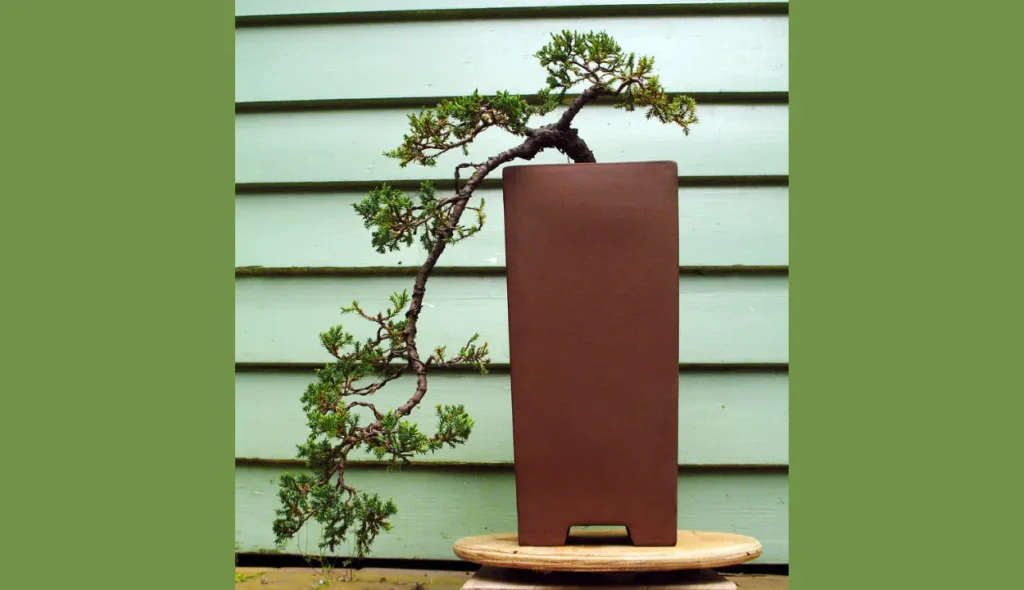
- Windswept Style:
Windswept style is a tree that has been shaped by severe winds. It leans and twists, telling a story of resilience. This style involves using wiring to bend and twist the branches in the direction of the prevailing “wind,” creating a captivating sense of movement.
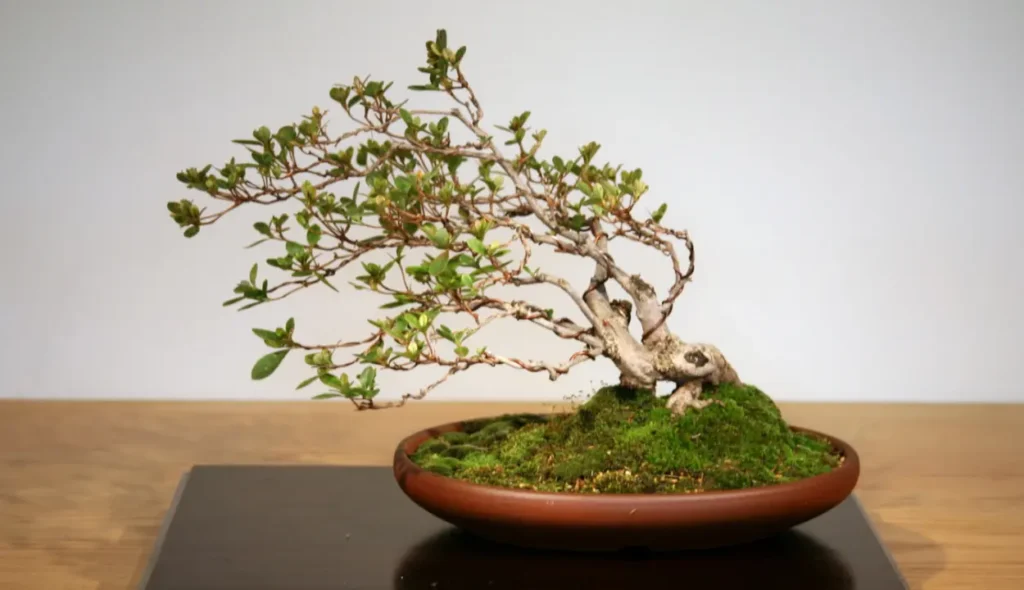
- Group Planting:
Group planting in bonsai is like creating a tiny forest. The style is known as “Yose-ue” in Japanese and involves planting several trees together in a single container. Each tree in the group has its unique characteristics. Group planting allows you to make a beautiful, miniature forest scene in your bonsai collection.
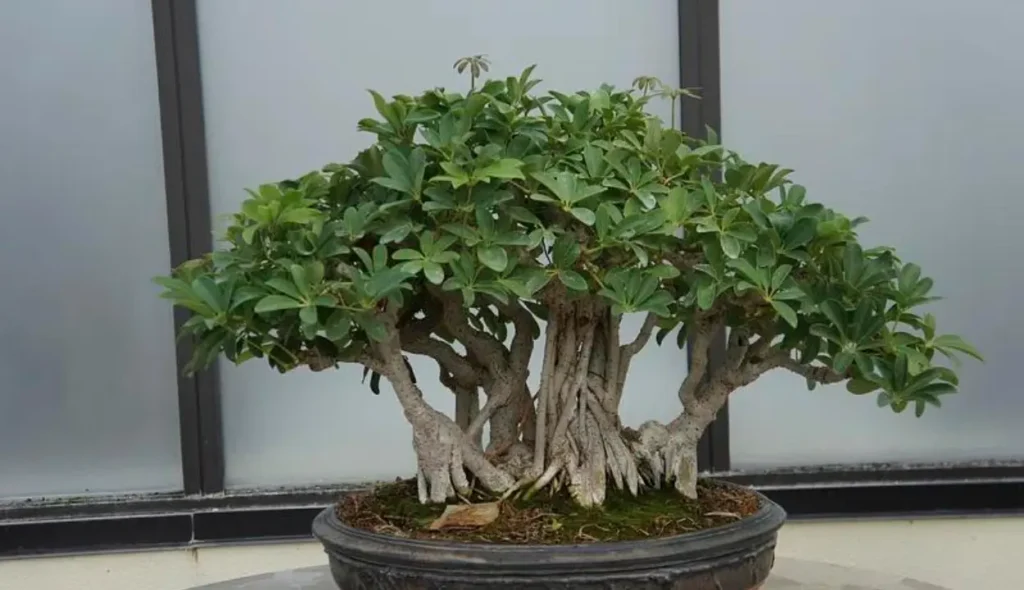
General Care of Bonsai Jade Plant:
Soil and Pot Selection:
Choosing the right soil and pot for your jade plant bonsai is important for health. Succulents dislike standing water, thus they require well-draining soil. Shallow bonsai pots are ideal, as they correspond to the shallow root system of jade plants. It is advised to use a mixture of succulent or cactus soil with pumice or perlite to provide proper drainage.
Watering and Care:
Watering is an important part of jade plant bonsai styles care. Allowing the soil to dry almost between watering is important since overwatering can cause root rot. In addition, to avoid waterlogging, make sure the pot has drainage holes.
To water your jade plant bonsai, follow the guidelines of watering when the top inch of soil is dry. Always remember to empty the saucer beneath the pot to prevent any standing water.
Sunlight Requirements:
Jade plants grow well in bright and indirect sunlight. For this, place your bonsai near a window with filtered sunlight or consider using artificial grow lights if natural light is limited. It’s beneficial to rotate your bonsai regularly to ensure even sunlight exposure, promoting balanced growth.
Fertilizing Jade Bonsai:
Maintaining a balanced fertilizer routine for bonsai is important for its health. For most bonsai trees, 10-10-10 (N-P-K) balanced all-purpose fertilizer is suitable. Adjust fertilizing according to the seasons, giving your plants more nutrients in the growth months and less or not at all in the winter.
Repotting and Transplanting:
Repotting bonsai is important for its care. You can repot bonsai after 2 years to prevent root binding and promote healthy growth. Select a slightly larger pot than the existing one to allow the roots to grow. Carefully remove the tree from its current pot and trim any damaged or too-long roots.
Fill the bottom of the new pot with fresh soil. Fill in around the roots of the bonsai with fresh soil. Water your bonsai thoroughly after repotting to settle the soil. Avoid bonsai from direct sunlight after repotting for a few weeks to reduce stress.
Pest and Disease Management:
To keep your jade plant bonsai healthy it is important to keep an eye on plant for pests and diseases. Common pests are mealybugs and scale insects. Regularly inspect your bonsai, and if you notice any issues, treat them. Overwatering can also be the cause of pest and disease problems in plants.
You can use neem oil or insecticidal soap to treat affected plants. To stop pests from spreading separate the affected plants.
Display:
Improving the aesthetic appeal of your jade plant bonsai is another satisfying part of bonsai cultivation. Consider using display stands that complement the distinctive features of your bonsai. You can also use rocks to create a naturalistic background that will highlight the beauty of your living artwork.
Conclusion:
Bonsai plants are a stunning combination of art and nature. Jade plants belong to a succulent family, therefore they are tough and have beautiful leaves which makes them excellent for many bonsai styles. There are six common jade plant bonsai styles you can make. You can give your bonsai a classic or upright look.
You must be patient in order to achieve the desired structure. Take proper care of the bonsai jade plants. You can successfully transform a simple jade plant into a beautiful bonsai that brings beauty into your home.
FAQS:-
Can I turn any jade plant into a bonsai?
Most jade plants can be made into bonsai. Always select varieties with compact growth and little leaves since they are more suited to production.
How often should I water my jade plant bonsai?
Water your jade plant bonsai when the top inch of the soil is dry. Adjust the watering frequency according to environmental parameters such as humidity and temperature.
What kind of soil is best for jade plant bonsai?
For jade plant bonsai, use well-draining soil mixtures, such as a mix of cactus or succulent soil with perlite or pumice, perform well. This prevents excessive water from accumulating in the soil.
How long does it take to shape a jade plant into a bonsai?
The complexity of styles and the size of the plant, when you begin, can make shaping take longer. Furthermore, the speed of growth of your jade plant variety affects the duration, as some grow faster than others. It could take years to achieve your desired style and shape.
What is the best season for repotting a jade plant bonsai?
Spring is often the best season to repot a jade plant bonsai because the plant is in an active growth period and can recover more easily from the repotting process.

